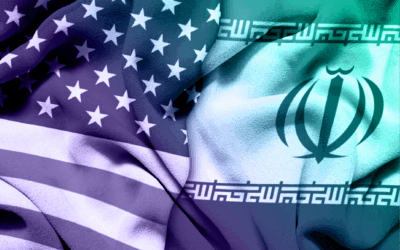By: Elena McGovern, Daniel Silverberg, and Tom Feddo
March 13, 2023
Executive Summary
Capstone believes the Biden administration’s much anticipated executive order (EO) establishing restrictions on US outbound investment to foreign countries of concern—most notably China—will be restrained compared to the proposed congressional legislation. However, the EO will still be the most significant oversight to date of how US investors deploy capital abroad.
The EO, which we expect will be issued in the next few weeks, will likely be limited to reporting requirements and focused on the sectors already receiving significant regulatory attention (advanced semiconductors, artificial intelligence, and quantum computing). It also could prohibit a narrow set of outbound capital flows related to advanced semiconductors.
Although a near-term relief to US investors at large, such a mechanism would be expandable once it is established through additional executive action and legislation, presenting long-term risks to US outbound capital flows to strategic sectors in China. We believe the EO should be seen as a consequential step for those sectors and entities covered by it and a shot across the bow to the broader US investment community invested in China’s strategic sectors.
The EO should heighten US investor sensitivities to outbound capital flows into Chinese sectors and “covered activities” beyond those it specifically addresses.
The EO should heighten US investor sensitivities to outbound capital flows into Chinese sectors and “covered activities” beyond those it specifically addresses. Sectors that should receive particular due diligence include those aligned with the White House’s Critical and Emerging Technologies List, which goes far beyond semiconductors and artificial intelligence (AI) to include communications and networking, renewable energy, space technology, biotechnology, autonomous systems and robotics, and other technologies. Capstone will continue to assess the impact of this EO as more details emerge.
A Deeper Look
Background
It is quite clear that today in Washington, China hardliners are ascendant in both the Republican and Democratic parties, particularly in Congress. Numerous House committees, for example, focused on the threats emanating from China in their first hearings this year. This is due to both policy concerns and a desire to protect committee jurisdiction from the new Select Committee on the Strategic Competition Between the United States and the Chinese Communist Party. The greater the prominence that the Select Committee achieves (the committee’s first hearing was scheduled for prime-time television), the more other House leaders will brandish their own anti-China credentials, resulting in a sustained cascade of anti-China legislation. We believe the 2024 election season will only accelerate this dynamic.
The Biden administration also has embraced an anti-China set of policies, but they are taking a more measured approach than Congress. The US Department of Commerce imposed unilateral restrictions on semiconductor exports last October and forged an international agreement in January to ensure that Japan and the Netherlands do not backfill US companies. Moreover, the White House’s hesitation to roll back Trump-imposed tariffs and its pursuit of measures to diversify supply chains from China underscore that the administration has a similar appetite for action and, in some cases, little maneuvering room on China.
Within this policy environment, Capstone has been closely following the prospects for the development of an outbound investment screening mechanism as another means to thwart Chinese exploitation of US technology and intellectual property. Depending on the precise design of the mechanism, this could generate a new set of investment risks for those already or seeking to invest capital into key sectors of the Chinese economy. Capstone Senior Adviser Tom Feddo, the former Assistant Secretary of the Treasury for Investment Security (CFIUS) and one of the authors of this note, provided testimony to Congress several times on these potential risks, including how an overly broad and complex and/or poorly defined investment screening mechanism could undermine free-market principles and transaction certainty.
The 2022 National Critical Capabilities Defense Act (NCCDA) is a key example of such a sweeping, broad policy proposal. The bill would have created an interagency outbound investment review committee—similar in concept and execution to CFIUS—with extensive authorities to restrict direct and third-party investments with relationships in China. To the extent the term “relationships” was poorly defined, the measure would have covered an indeterminate number of sectors, technologies, and even countries. Congress held multiple hearings on the idea of establishing an outbound investment screening, but the Senate ultimately rejected a form of the NCCDA in the Endless Frontiers Act (which included the CHIPS Act). Nonetheless, several lawmakers—including Senators Bob Casey (D-PA), John Cornyn (R-TX), and Chuck Schumer (D-NY), alongside then-Speaker Nancy Pelosi (D-CA) and other bipartisan members of the House—encouraged the White House to act through executive order to “prevent the offshoring of critical production capacity and intellectual property to our foreign adversaries, including the People’s Republic of China (PRC) and the Russian Federation.” The White House has been working on its executive order since at least mid-2021.
Anticipating the EO
Capstone believes an EO establishing outbound investment restrictions will be issued in the coming weeks, although given the internal divisions within the Biden administration over how to establish this program, this timeline could slip. In a recent report to Congress, the US Department of the Treasury estimated that the program will cost $10 million in FY2023.
We believe the EO will be restrained in its breadth and depth relative to previous congressional legislation and the preferences of China hardliners, with the scope generally expected to be limited to reporting requirements and focused on the sectors already receiving significant regulatory attention. This means, initially, we do not see an executive order giving the US government the ability to block specific investments into China (or other countries of concern), with the likely exception of that being in the semiconductor space.
Commerce Secretary Gina Raimondo’s comments on March 2nd, in which she flagged the risks to US 401(k)s and pension plans should investment screening be too broad, highlighted tensions within the administration over how to balance injecting regulatory oversight and, therefore, friction into the US‒China private sector and investment ecosystem, with the national security aim of combating Chinese exploitation of US technology. Our sense is Secretary Raimondo’s position—a balanced approach of national security restrictions and investment stability—will likely prevail.
Key questions for when the EO is issued include:
- What agency(ies) will implement the program? Capstone believes Treasury and Commerce will be the lead departments, with other agencies providing essential inputs into the process.
- Will the Biden administration have the authority to review and reject specific transactions? At present, Capstone believes if this authority is included in the EO, it likely will be limited to advanced semiconductors. This would be consistent with the restrictions recently established to prevent US investment in this sector. We believe, beyond semiconductors, other “covered” sectors and activities also will be subject to reporting requirements at this time.
- How will the reporting requirements be designed, and what will the compliance mechanism be? Areas of importance will be how the administration handles enforcement of any transparency mechanism established under the EO, as well as how the administration intends to protect sensitive and proprietary business information the private sector shares with the government.
- How specific will the EO be in terms of what is “covered” and what is not? The ambiguous scope of exactly what was covered by the interim final rule that Commerce’s Bureau of Industry and Security (BIS) published on October 7, 2022, resulted in US-based companies halting shipments and pausing services involving US customers, as well as activities at their own facilities, as they sought clarification. Given this experience and the administration’s consultation with industry as a part of this process, we expect the EO to include greater detail on what will be covered, including whether joint ventures and other investment vehicles that establish a “relationship” with a covered Chinese entity will require reporting.
- What actions, if any, would the administration take if a problematic investment is reported through this mechanism?
- What opportunity will the public have to provide input and feedback? We believe there will be a rulemaking process related to outbound investment screening, which will have a notice and comment period.
We expect the issuance of this EO—particularly if it is as restrained as we believe it will be—to generate vociferous bipartisan criticism that it is insufficiently strong on China. Despite this, we do not anticipate a bill from Congress establishing outbound investment restrictions to make it to President Biden’s desk in 2023, leaving the EO to be the primary restraint on US outbound investment this year.
Two key questions we will be considering once the executive is released are 1) what activities will be covered and 2) how will the administration enforce the order?
Additionally, and regardless of the specifics of the EO, the administration will continue to leverage its informal power to steer investors away from China. The threat of “shaming” or, perhaps, even invoking sanctions against specific investments, has long been used by administrations across political parties to ward off undesirable investments. Confidence in an “informal” power could buttress the Biden administration’s calculus not to pursue a complex legal restrictions regime on outbound investment at this time. But we believe this restraint should not be interpreted as ambiguity about the intent of the EO and the risks the administration is trying to minimize.
Broader Investment Implications
Capstone emphasizes that the EO—despite being narrower than it was presumed to be in 2022—should be seen as both a consequential step for those sectors and entities covered by it and a shot across the bow to the broader US investment community invested in China’s strategic sectors. We believe, once it is established, such a mechanism will be expanded and built upon through both additional executive action and legislation.
To be sure, an EO comes with “stroke-of-a-pen” risk at the change of administration. However, given the trajectory of US-China relations and the current hawkishness of the Republican Party vis-à-vis China today, combined with a bipartisan recognition that there are national security consequences to US-China investment and collaboration in strategic sectors, we do not see an outbound investment screening mechanism, particularly if it is narrow and/or a “pilot program,” to be revoked and reporting requirements abandoned in the coming years. Quite the contrary. We believe the odds are policymakers and regulators alike will expand the scope of oversight over time.
Given this dynamic, Capstone sees two major implications for investors beyond the specifics of and compliance requirements with the EO itself. First, the move should heighten US investor sensitivities to outbound capital flows into Chinese sectors and “covered activities” beyond those specifically addressed in the EO. Sectors that should receive particular due diligence are those aligned with the White House’s Critical and Emerging Technologies List, which goes far beyond the technology areas highlighted above, including communications and networking, renewable energy, space technology, biotechnology, autonomous systems and robotics, and others.
Second, US investors should be mindful of the increasing reputational risks associated with investments into these strategic sectors in China amid a broader recognition that capital flows are—and will increasingly be—a vector for national security concerns and policymaking. Investments might remain legal and unrestricted, but the White House will continue to watch closely where US investors are deploying capital.



























